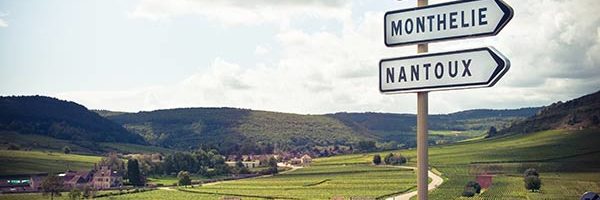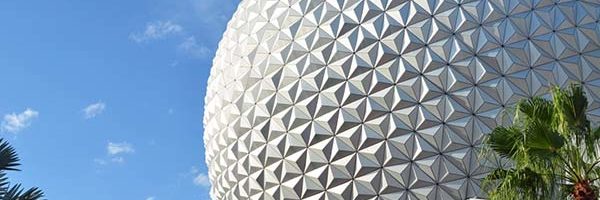
Yoga for Tension Release
Despite the wide availability of ergonomic office chairs, car seats with massaging lumbar support, and chiropractic offices on almost every corner, neck, shoulder and upper body tension still remains one of the primary physical ailments for many people.
We tend to hold tension in areas of our bodies without even realizing it. For example, right now, wherever you are, just take a moment to close your eyes, sit up straight, and take a deep breath. As you inhale, bring your attention to your shoulders and observe their position. As you exhale, relax your jaw and allow your shoulders to fall away from your ears. Now breathe in again and observe the muscles running down the spine. As you exhale, imagine any residing tension sliding down your back releasing the weight of your body into your hips. Now open your eyes. Did you feel any tension that you hadn’t noticed before?
The mental and physical practice of yoga can be a powerful tool to help us clear our minds and find and release the physical tension that all too often keeps our bodies tight and exhausted. We do this by teaching our bodies how to release tension and convert it into strength and stability. But for this to happen, we must first be willing to step away from our hectic lives and take a moment to “stop, breathe, and observe” where our tension is held.
As we learn to release our tension into strength, we discover that not only do we have less physical pain, but we also have an increased sense of well being and creativity. This works because our bodies are machines that have finite resources. When we do not actively work to release tension and balance our muscles, our bodies have to devote a considerable amount of resources to those areas that are holding tension. When we release that tension, our bodies are then free to reallocate that energy to other areas, therefore boosting energy, aiding in healing, and increasing mental acuity and creativity.
The following sequence helps to release tension in some of the most common areas of the body: the neck, shoulders, and hips. To maximize the benefits of this routine, I encourage you to “stop, breathe, and observe” in each pose, finding your tension and releasing it into strength and stability.
Before You Begin: Practice Child’s Pose for 1-2 minutes with your knees together and your belly resting against your thighs. If there is excess strain or tension in the neck and shoulders, place a block under your forehead. Focus on and redirect your breath to the back of your body, breathing into the ribs and low back using the exhale to release all tension and strain.
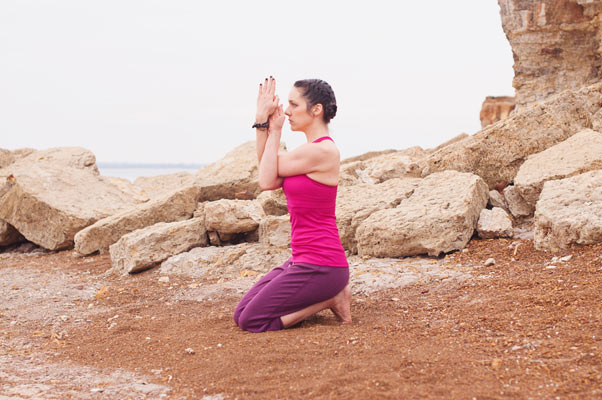
Garudasana (Eagle Pose – Variation)
From child’s pose, come up on all fours in a tabletop position. Spread your toes and curl them under. Bring your body upright and sit back on your heels. Allow the tailbone to become heavy and rest on your heels. Extend your arms in front with palms facing up. Cross your right arm over your left at the elbows and bend your arms toward your face. Turn palms outward, bringing your left hand towards your nose and wrapping hands until palms are touching.
Focus Point: Breathe into the back of your body between the shoulder blades using the exhale to soften and release tension in the shoulders, neck, and jaw. Hold for 3-5 breaths.
Marjaryasana (Cat Pose)

 Release the arms and return to all fours in a tabletop position. Inhale while creating a gentle arch in the spine by lengthening the crown of the head and the tailbone away from each other and lifting the head slightly. Exhale while drawing the navel in towards the spine and pressing the hands into the floor. Gently round the spine upward. Allow the head and tailbone to hang downward creating a gentle curve along the back.
Release the arms and return to all fours in a tabletop position. Inhale while creating a gentle arch in the spine by lengthening the crown of the head and the tailbone away from each other and lifting the head slightly. Exhale while drawing the navel in towards the spine and pressing the hands into the floor. Gently round the spine upward. Allow the head and tailbone to hang downward creating a gentle curve along the back.
Focus Point: Move in and out of this pose 5-8 times with your breath. Focus on using the breath while moving to lengthen the spine and release tension.
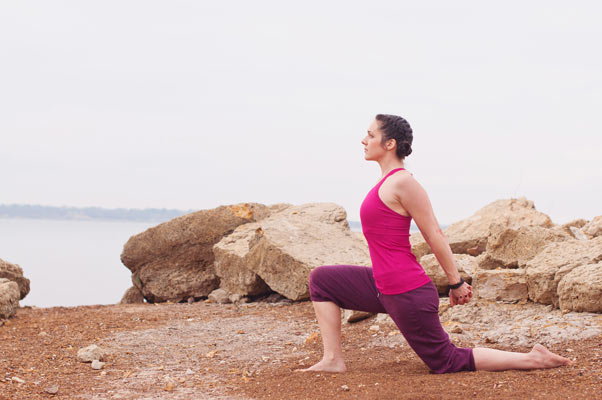
Anjaneyasana (Low Lunge – Variation)
From the tabletop position, swing your right leg forward through the arms placing the foot down with the back of the heel lined up with the heel of your hand (or further forward for a deeper stretch). Bring torso upright and clasp your hands behind your back with fingers interlaced. Press hips forward as you lengthen the tailbone towards the floor, creating a gentle stretch in your left hip. To keep your weight evenly distributed between your legs, press your back shin into the floor. Inhale and extend hands toward the floor, lengthening the spine and opening the collar bones. To further open your chest, exhale while drawing the navel in towards your spine and extending the hands out away from the tailbone.
Focus Point: Breathe into the collar bones and the open hip, moving the tension in the upper body downward and converting it into strength and stability in the legs. Hold this pose for 5-8 breaths.
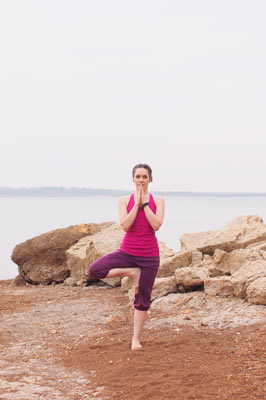
Vrksasana (Tree Pose)
To come to standing, return hands to the floor, swinging your back foot forward with bent knees, bringing feet together. Come to standing with feet hip-width apart. Shift your weight to your right foot keeping your right hip firm. Clasp your left ankle in your hand and place your heel high inside of the right thigh. Gently press your foot and thigh towards each other while lengthening up through the crown of the head and pressing down through the standing foot. Lengthen the tailbone towards the floor.
Focus Point: Soften your gaze and hold for 5-8 breaths, calming your mind and mentally releasing your worries. Again, focus on releasing upper body tension downward, converting it into stability and strength.

Standing Yoga Mudra
Release your left foot to the floor and stand with feet slightly wider than hip-width apart. Clasp your hands behind you with interlaced fingers. Inhale while lengthening hands downward towards the floor and drawing the shoulder blades together. Exhale, folding at the hips, bending knees and extending buttocks backward like you’re sitting down in a chair. Rest your ribs and belly against your thighs. Bring your arms away from your back allowing them to release comfortably, keeping neck and head relaxed.
Focus Point: Breathe into the back of the body between the shoulder blades. Exhale while sinking into the pose using the stability of the legs to release the tension in the upper torso.
Transition: Lengthen arms towards ceiling, lifting the chest parallel to the floor with knees still bent. Inhale while slowly lifting your torso upright. Straighten legs and release the hands. Pause for a moment and allow yourself to experience the sense of calm following this pose. Repeat the series of exercises on the left side. To Finish: Come back to the floor. (If desired, do a few supine twists first.) Lay back in Savasana (Corpse Pose) for 5-10 minutes.
Written by Jenni Hulet.
Find her at www.urbanposer.com


